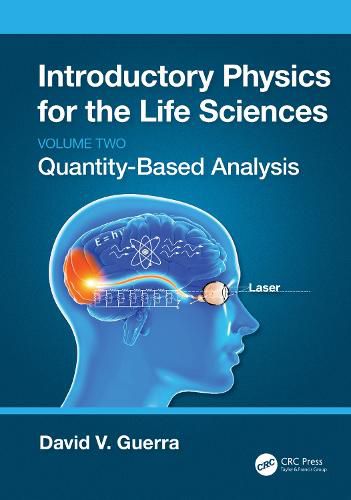Readings Newsletter
Become a Readings Member to make your shopping experience even easier.
Sign in or sign up for free!
You’re not far away from qualifying for FREE standard shipping within Australia
You’ve qualified for FREE standard shipping within Australia
The cart is loading…






This textbook provides an accessible introduction to physics for undergraduate students in the life sciences, including those majoring in all branches of biology, biochemistry, and psychology and students working on pre-professional programs such as pre-medical, pre-dental, and physical therapy. The text is geared for the algebra-based physics course, often named College Physics in the United States.
The order of topics studied in this volume requires students to first understand a concept, such as the conservation of energy, momentum, voltage, or current, the change in a quantity such as entropy, or the rules of ray and wave optics. Then, students apply these concepts to solve problems in the areas of thermodynamics, electrical circuit, optics, and atomic and nuclear physics.
Throughout the text these quantity-based applications are used to understand systems that are critical to the understanding of biological systems, such as the entropy of evolution, the signal down the axon of a nerve cell, the optics of the eye, and the operation of a laser.
This is part 2 of a two-volume set; volume 1 introduced students to the methods of mechanics and applied these problem-solving techniques to explicitly biological topics such as the sedimentation rate of red blood cells in haemoglobin, the torques and forces on a bacterium employing a flagellum to propel itself through a viscous fluid, and the terminal velocity of a protein moving in a gel electrophoresis device.
Key features:
Organized and centered around analysis techniques, not traditional mechanics and E&M Presents a unified approach, in a different order, meaning that the same laboratories, equipment, and demonstrations can be used when teaching the course Demonstrates to students that the analysis and concepts they are learning are critical to the understanding of biological systems
$9.00 standard shipping within Australia
FREE standard shipping within Australia for orders over $100.00
Express & International shipping calculated at checkout
This textbook provides an accessible introduction to physics for undergraduate students in the life sciences, including those majoring in all branches of biology, biochemistry, and psychology and students working on pre-professional programs such as pre-medical, pre-dental, and physical therapy. The text is geared for the algebra-based physics course, often named College Physics in the United States.
The order of topics studied in this volume requires students to first understand a concept, such as the conservation of energy, momentum, voltage, or current, the change in a quantity such as entropy, or the rules of ray and wave optics. Then, students apply these concepts to solve problems in the areas of thermodynamics, electrical circuit, optics, and atomic and nuclear physics.
Throughout the text these quantity-based applications are used to understand systems that are critical to the understanding of biological systems, such as the entropy of evolution, the signal down the axon of a nerve cell, the optics of the eye, and the operation of a laser.
This is part 2 of a two-volume set; volume 1 introduced students to the methods of mechanics and applied these problem-solving techniques to explicitly biological topics such as the sedimentation rate of red blood cells in haemoglobin, the torques and forces on a bacterium employing a flagellum to propel itself through a viscous fluid, and the terminal velocity of a protein moving in a gel electrophoresis device.
Key features:
Organized and centered around analysis techniques, not traditional mechanics and E&M Presents a unified approach, in a different order, meaning that the same laboratories, equipment, and demonstrations can be used when teaching the course Demonstrates to students that the analysis and concepts they are learning are critical to the understanding of biological systems